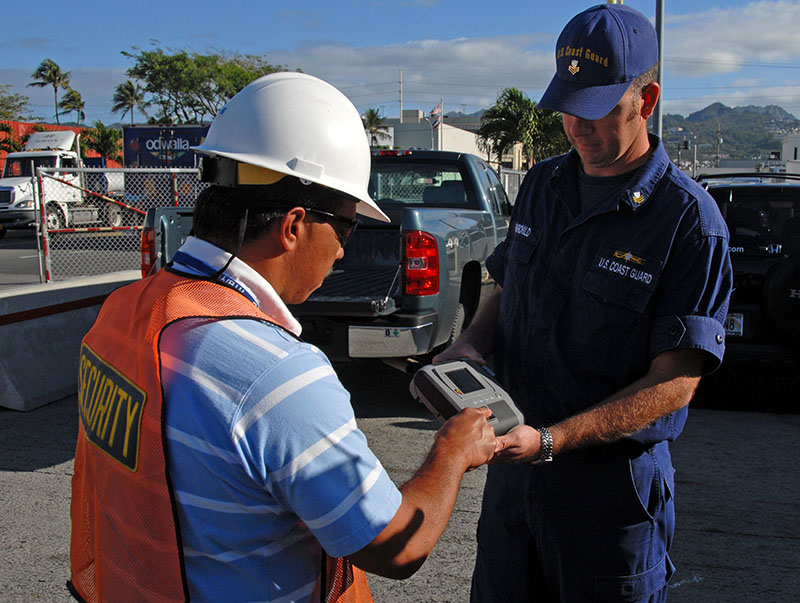Almost three-and-a-half years after the U.S. Coast Guard issued the proposed rule for the second phase of the TWIC security program that will require electronic card readers on certain vessels and facilities to control access to secure areas, the final rule has been released.
The rule requires owners and operators of certain vessels and facilities regulated by the Coast Guard to conduct electronic inspections of TWICs as an access control measure. The final rule also implements recordkeeping requirements and security plan amendments that will incorporate these requirements.

A TWIC reader. WorkBoat file photo.
The final rule should please the workboat industry. Back in March 2013 when the card reader NPRM was released, the reaction was generally positive, as the proposal didn’t seem to contain any surprises or veer from what many in the affected industries had expected after months of public comment and interaction between the maritime industry and the U.S. Coast Guard, which prepared the rule.
At the time, the American Waterways Operators said it was pleased that the NPRM exempted vessels with less than 14 crewmembers from carrying a card reader onboard. Most towboats fall into this category.
And the Passenger Vessel Association also praised the exemption for vessels with fewer than 14 crewmembers, as well as an exemption for vessels carrying 1,000 passengers or less. However, the PVA urged that the number be increased to 20 from 14 outlined in NPRM.
In the final rule, the exemption was increased to vessels that have 20 or fewer TWIC-holding crewmembers, and the 1,000-passenger threshold was maintained.
"We are delighted that the Coast Guard has supported PVA's long-held position that TWIC readers are unnecessary for the vast majority of passenger vessel operators," PVA President Margo Marks said in a statement. "We strongly believe that current industry security measures are effective in protecting passengers and crew and we are pleased that the Coast Guard has agreed with us."
Also, in a move that should please the barge industry, the final rule eliminates the special requirement that barge fleeting facilities that handle or receive barges carrying certain dangerous cargoes (CDC) in bulk be classified as Risk Group A (vessels that carry CDC in bulk; vessels that carry more than 1,000 passengers; facilities that handle CDC in bulk; and facilities that receive vessels certified to carry more than 1,000 passengers). Barge fleeting facilities are instead classified the same as all other facilities. This will effectively eliminate most isolated barge facilities from the electronic TWIC inspection requirements due to a lack of a secure area, the Coast Guard said.
The final rule provides additional flexibility in the purchase, installation, and use of electronic readers. Instead of requiring the use of a TWIC reader on the TSA’s Qualified Technology List (QTL), owners and operators can choose to fully integrate electronic TWIC inspection and biometric matching into a new or existing physical access control system.
The final rule only affects Risk Group A vessels and facilities, and no changes to the existing business practices of other MTSA-regulated vessels and facilities are required.
The final rule will not officially go into effect until Aug. 23, 2018.





